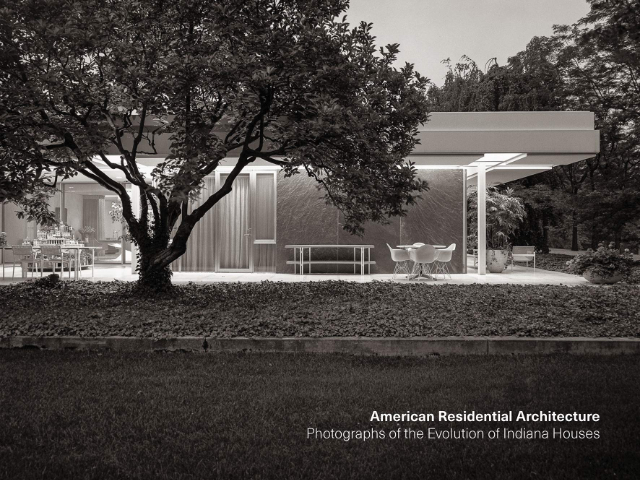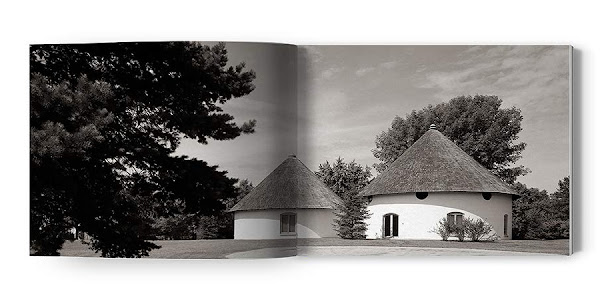American Residential Architecture
American Residential Architecture: Photographs of the Evolution of Indiana HousesCraig Kuhner, Alan WardOscar Riera Ojeda Publishers, December 2018Hardcover | 12 x 9 inches | 288 pages | English | ISBN: 9781946226266 | $65.00PUBLISHER'S DESCRIPTION:In the early nineteenth century, Indiana was at the intersection of ideas from the East and the frontier - resulting in a unique opportunity to express creative adaptions of residential architectural styles in America. Industrialization later in the century created a new wealth to build extraordinary houses outside of cities; by the early twentieth century, Americans had created their own distinctive residential architecture with the Prairie Style.This 288 page compendium includes over ninety houses in Indiana which are representative of the finest American residential architecture, from the Federal and Classical Revival style to Modern. The fascinating story of the evolution of residential architecture elaborates on the character defining features of each period, including the exterior form, massing, details as well as interiors - all beautifully illustrated in large format black and white photographs.Craig Kuhner is a Professor Emeritus at the University of Texas at Arlington where he taught architectural design, photography and portfolio design. His photographs have appeared in over 100 magazines, journals and catalogues including Architectural Record, Architectural Digest, The Architecture Review and House and Garden. Alan Ward is a principal at Sasaki in Watertown, Ma where he has practiced as a planner and designer for over 30 years. His projects include the rehabilitation of the landscape at the Lincoln Memorial and Reflecting Pool, the East Grounds of the US Capitol, and the landscape design for new US Embassies in The Hague, Helsinki, Beirut and Montenegro.REFERRAL LINKS: dDAB COMMENTARY:All of the houses presented in beautiful black-and-white photographs in this book are found in Indiana, yet the title of the book is simply American Residential Architecture. So while the book traces 175 years of residential architecture in one state, Indiana stands in for the country as a whole. How is this possible for any state, much less Indiana? For the authors, Craig Kuhner and Alan Ward, it has to do with Indiana's proximity to the East Coast and the state's history across the nineteenth century, when prosperous towns sprang up in clusters along rivers and railroads. Over the course of that century, and well into the twentieth, architects experimented in those places and in major cities with styles that "mirrored predominant architectural styles of the nation," the authors/photographers contend in their brief introduction, "while also finding [their] own distinctive voice[s] in Indiana."American Residential Architecture is a couple years old now, but the photographs in it date back four decades. Kuhner and Ward's photographic documentation of Indiana's architecturally significant houses was the product of a proposal by Charles M. Sappenfield, Dean of the School of Architecture at Ball State University in the early 1970s. Between 1972 and 1978, the duo trekked the state to photograph houses that were then presented in lectures. But the negatives of the photos sat in storage until 2016, when Kuhner and Ward decided to compile them into a book, this book. With nary an automobile or other distraction outside of the houses and their landscapes present in the photographs, the images hold up remarkably well as documents of the inside and outside of important houses spanning centuries.The book is a chronological journey through nearly 200 years of residential architecture in Indiana, built upon the structure of architectural styles studied by Wilbur Peat in his 1969 book Indiana Houses of the Nineteenth Century. Kuhner and Ward start with the Federal style and move through Classical Revival, Gothic Revival, Italianate, and other styles of the 1800s, before continuing into the twentieth century with Prairie Style, Art Deco and Modern, and Late Modern styles. Each style/chapter has one page of text that briefly describes the style and how some of the houses that follow correspond to it. After a while I skipped these texts, as well as "Notes on the Houses" in the back of the book, as the abundance of bad punctuation was distracting and too much of the information left me asking more questions than the authors provide. (Not surprisingly, no copy editor is listed on the copyright page.) Thankfully, American Residential Architecture is about the photos, not the words.Although the book covers the styles that have marked residential architecture in the whole United States, much of the joy is discovering local and regional architects who are not as well known as the familiar names. Frank Lloyd Wright is the main presence in the chapter on the Prairie Style, for good reason, but the following chapter on Art Deco and Modern styles goes well beyond Midwestern architect Eero Saarin

Craig Kuhner, Alan Ward
Oscar Riera Ojeda Publishers, December 2018
Hardcover | 12 x 9 inches | 288 pages | English | ISBN: 9781946226266 | $65.00
PUBLISHER'S DESCRIPTION:
REFERRAL LINKS:
SPREADS:









